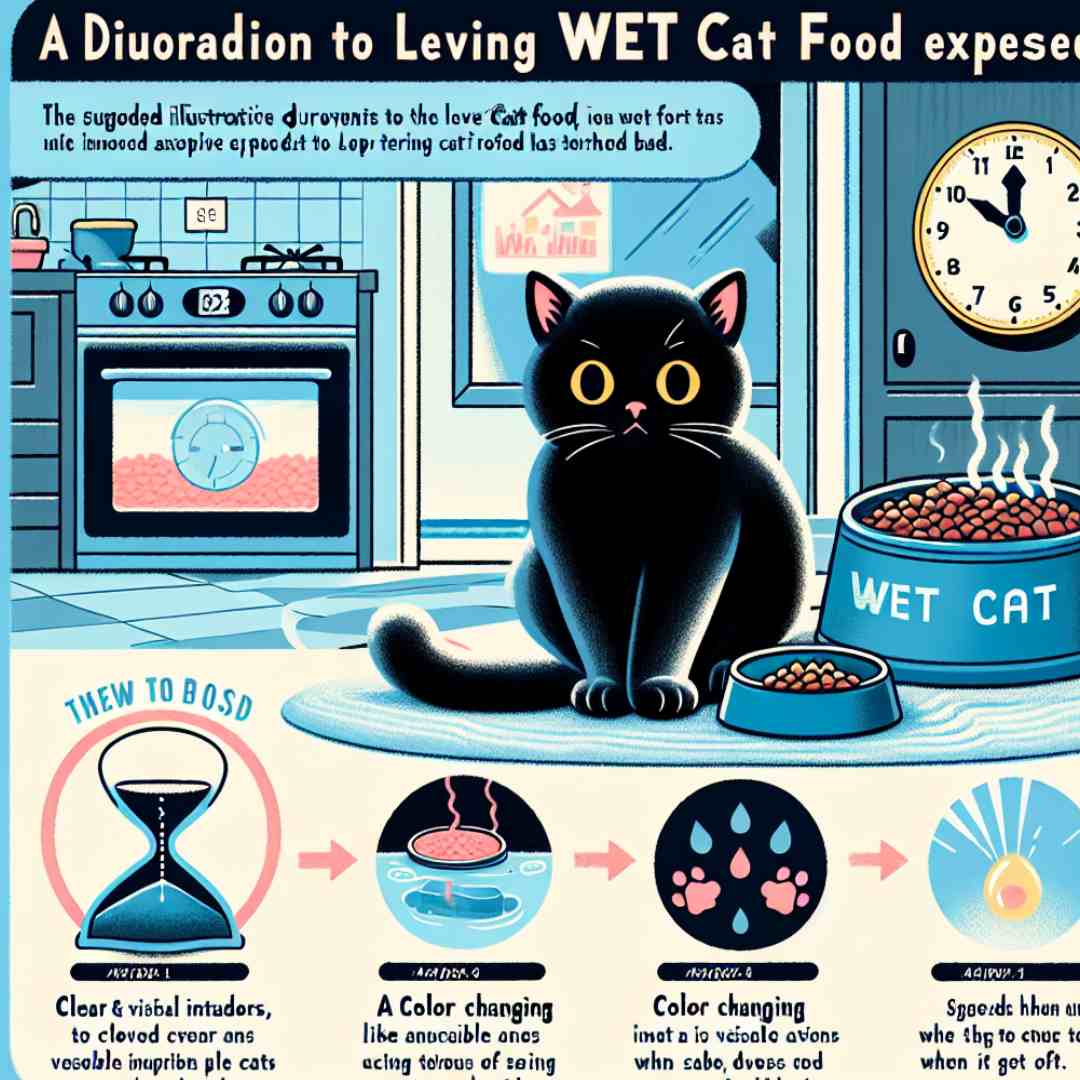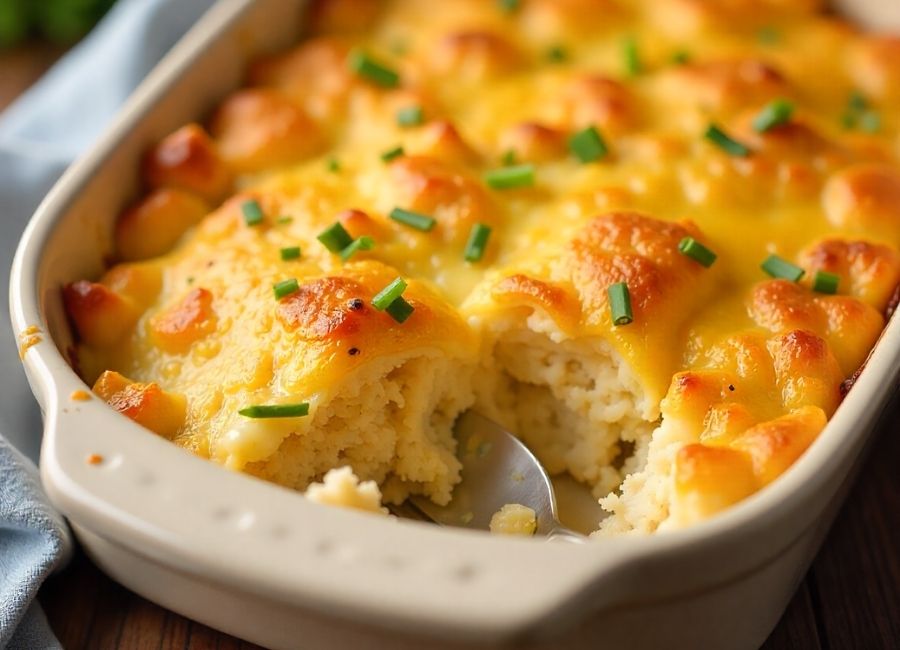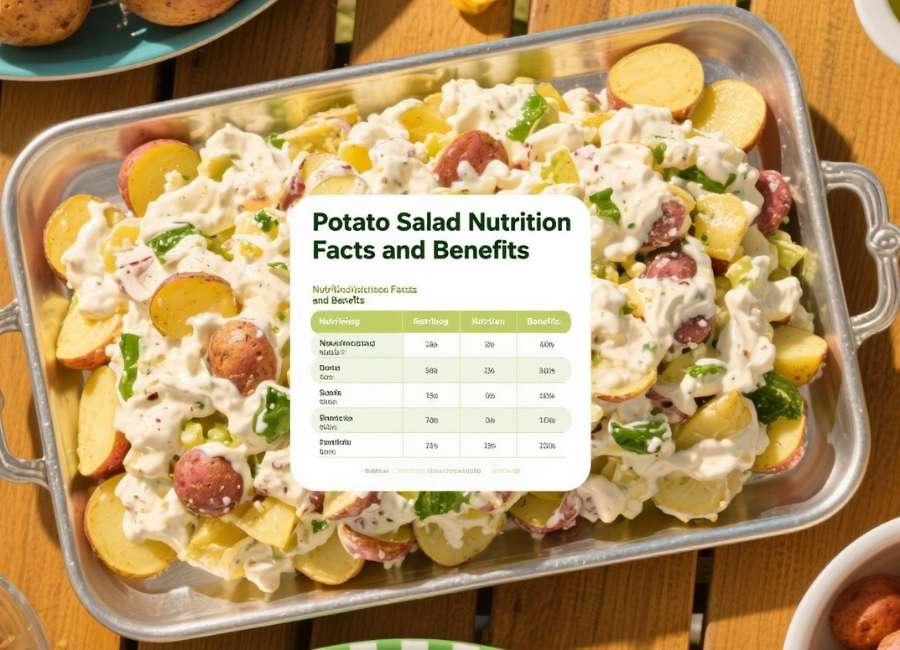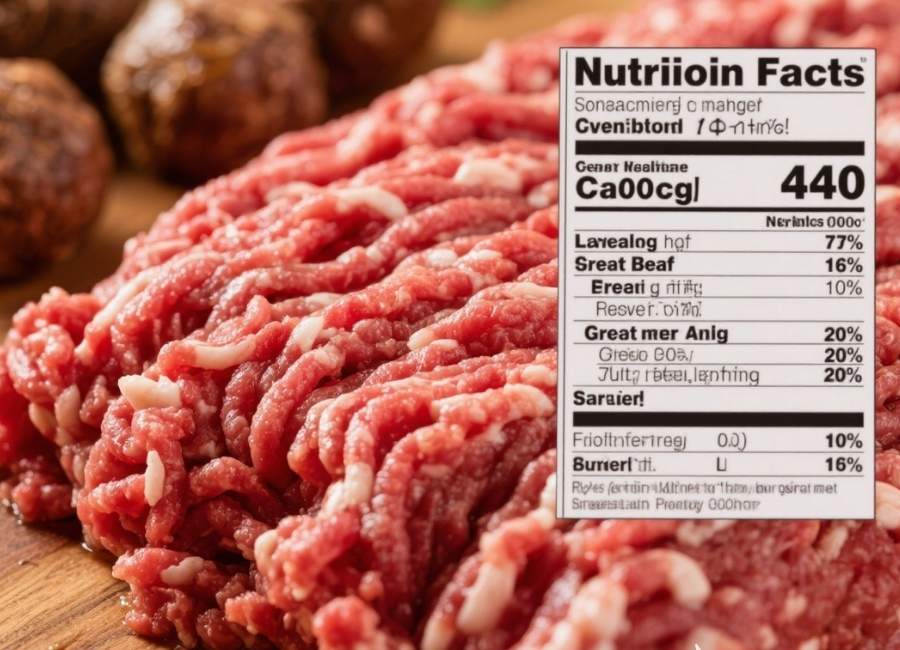Wet cat food is excellent for keeping your feline friend healthy and happy. It’s packed with moisture and nutrients, making it a favorite for many cats. However, when it comes to leaving wet cat food out, things can get tricky. Do you know how long it’s safe for wet food to remain in your cat’s bowl before it becomes a hazard to their health?
Why Does Timing Matter with Wet Cat Food?
Unlike dry kibble, wet cat food contains a lot of moisture, which makes it more susceptible to spoiling quickly. Wet food left out for too long can develop harmful bacteria like Salmonella or Listeria. These bacteria not only spoil the food but can also cause digestive issues and seriously ill your cat.
Ensuring that wet cat food does not sit out longer than it should isn’t just about avoiding waste; it’s also about protecting your pet’s health.
How Long Can Wet Cat Food Sit Out?
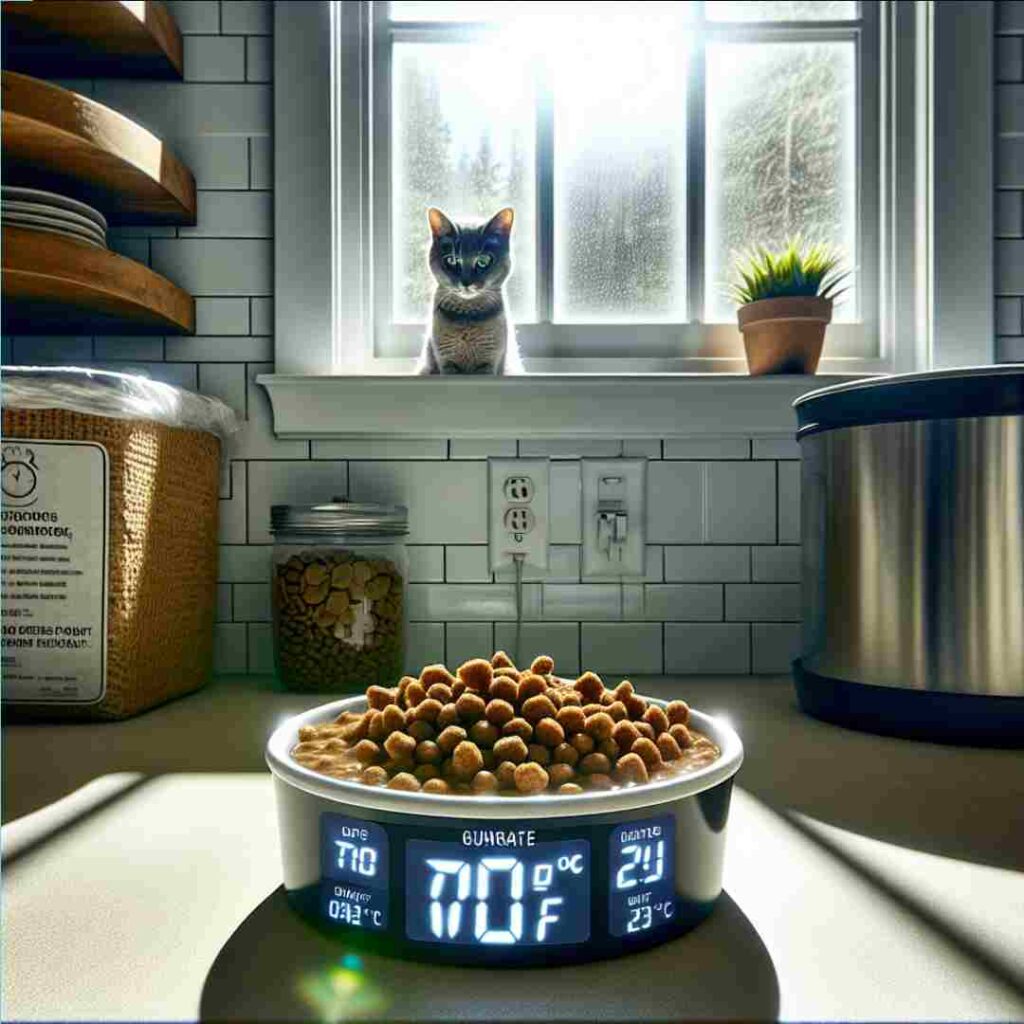
While there are a few factors that affect how quickly wet food spoils—notably the room temperature and whether direct sunlight is hitting the bowl—a general rule of thumb is this:
At Room Temperature (70°F or 21°C):
Wet cat food should be left out for at most 4 hours. Beyond this point, it becomes an ideal breeding ground for bacteria.
Warmer Temperatures (Above 85°F or 29°C):
When the room is hotter, like on a summer day, wet food will spoil even faster—within 1-2 hours. This is especially important if the food is left in direct sunlight, accelerating the spoiling process further.
Cooler Temperatures (Below Room Temperature):
While more excellent indoor conditions can slightly slow bacterial growth, sticking to the 4-hour maximum is still best. Leaving food out overnight, even in a fantastic house, is a big no-no.
If you are still determining how long food has been left out, err on caution and throw it away. Cats are prone to food sensitivities, and spoiled food can lead to vomiting, diarrhea, or worse.
What Happens When Wet Cat Food Sits Out Too Long?
Development of Bacteria
Once you open a can or pouch of wet food and expose it to air, bacteria from the environment can quickly settle and multiply. Harmful bacteria like E. coli and Salmonella thrive in moist, nutrient-rich environments.
Changes in Smell and Texture
Spoiled wet food often smells sour or rancid. You may also notice a slimy texture or even a slight discoloration. While your cat may still try to eat it, consuming spoiled food can harm their digestive system.
Potential Health Risks for Your Cat
Feeding your cat spoiled food can lead to various health issues, including gastrointestinal upset, food poisoning, and more severe infections. Symptoms may include nausea, vomiting, lethargy, or a loss of appetite.
How to Serve and Store Wet Cat Food Properly
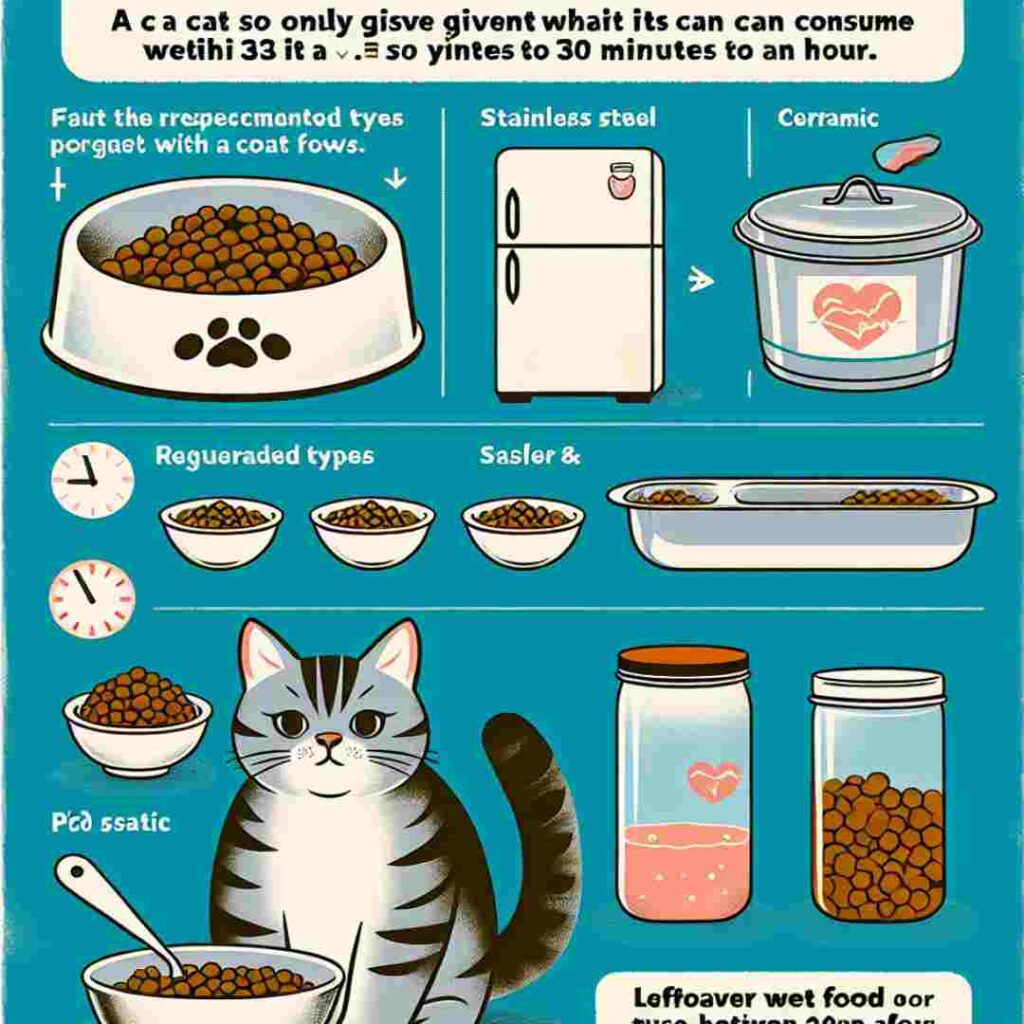
Serve Smaller Portions
Cats often won’t finish a large serving of wet food in one sitting, so portion out as much as your cat can eat within a short time (usually around 30 minutes to an hour). This not only reduces waste but also ensures every meal is fresh.
Use Safe Serving Bowls
Opt for stainless steel or ceramic bowls. Both are safer and more hygienic than plastic bowls, which can trap bacteria in their scratches or grooves.
Refrigerate Leftovers
If wet food remains in the can or pouch, seal it tightly and store it in the refrigerator immediately. To preserve its quality and safety, try to use refrigerated wet food within 24-48 hours.
- Consider warming it slightly to room temperature when serving refrigerated food to enhance its flavor and appeal for your cat. You can microwave it for a few seconds or let it sit in a bowl of warm water. Avoid serving it cold from the fridge, as many cats dislike cold food.
Invest in Proper Food Storage
Instead of using plastic wrap to cover half-used cans, invest in a particular can lid for pet food storage. These lids help maintain freshness and are more secure at keeping bacteria out.
Clean the Food Bowl After Each Use
Wet cat food tends to leave behind residue that can harbor bacteria. Washing your cat’s bowl after every meal ensures it’s safe from germs. Use hot, soapy water and rinse thoroughly to prevent any soap residue.
Check Expiration Dates
Remember to check the expiration dates on wet food cans or pouches. Even if it hasn’t been opened, eating expired food can lead to health risks for your pet.
Tips for Hot Weather
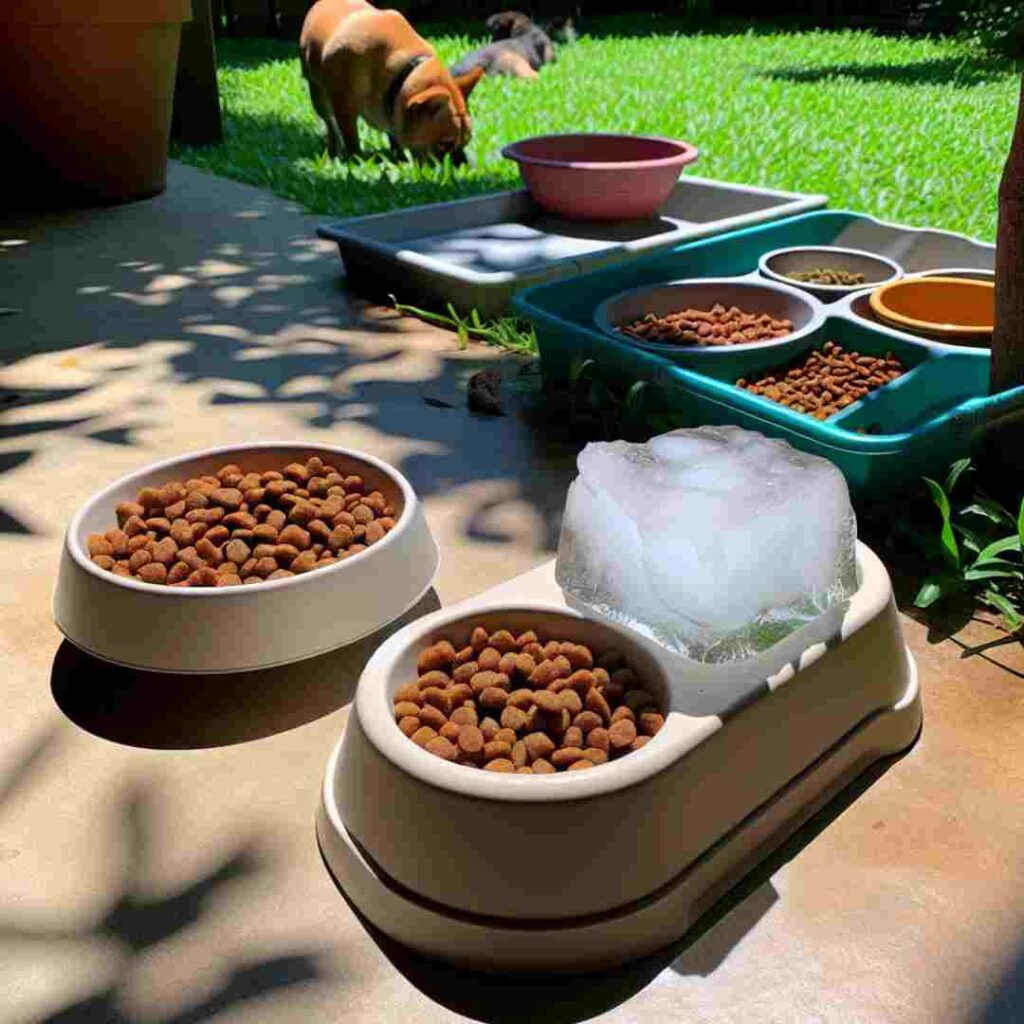
During warmer months, keeping wet food out becomes even more challenging. Here’s how to handle it when the temperatures rise:
- Place the damp food bowl in a shaded area to prevent direct sunlight.
- Consider using an ice-based food tray. Some feeding bowls have a detachable base, to which you can add ice to keep food fresher for longer.
- Be vigilant and remove uneaten food within 1-2 hours to avoid spoilage.
How to Tell If Wet Cat Food Has Gone Bad
Scrutinize the wet food if you need help determining whether it is safe. Here are some tell-tale signs of spoiled food:
- Foul odor (sour, rotten, or metallic smells)
- Discoloration or an unusual change in the food’s texture
- Sliminess or visible mold
If any of these signs are present, discard the food immediately.
Frequently Asked Questions
How can I tell if my cat’s food bowl is safe?
Opt for stainless steel or ceramic bowls, as they are non-porous and resistant to accumulating bacteria compared to plastic bowls, which can harbor germs in their scratches.
Is it safe to leave wet cat food out overnight?
No, leaving wet cat food out overnight is unsafe, even in more excellent conditions. Bacterial growth can occur rapidly, leading to the risk of spoilage and potential health issues for your cat.
What should I do if my cat doesn’t finish their food within the safe timeframe?
Remove any uneaten food after the advised timeframe, usually 1-4 hours, depending on the temperature, and store leftovers in the refrigerator. Use them within 24-48 hours to ensure freshness.
Can I mix wet and dry cat food?
Yes, you can mix wet and dry food. However, serve it in a portion your cat can consume in one sitting to avoid spoilage of the damp component.
Why doesn’t my cat like cold, wet food from the refrigerator?
Many cats prefer room-temperature food as it is more aromatic and closer to what they naturally consume. Warm the refrigerated food slightly before serving to enhance its appeal.
Final Thoughts
Wet cat food is an excellent choice for your feline friends but must be handled carefully. Never leave it out for more than 4 hours (or less in warm weather), and always prioritize safe storage and serving habits to protect your cat’s health.
By serving food responsibly and following proper storage tips, you’ll reduce waste and keep your furry companion happy and healthy at every meal.






